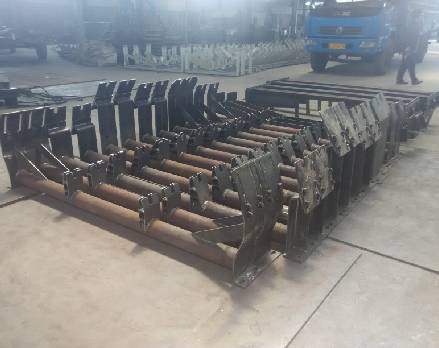 Afrikaans
Afrikaans  Albanian
Albanian  Amharic
Amharic  Arabic
Arabic  Armenian
Armenian  Azerbaijani
Azerbaijani  Basque
Basque  Belarusian
Belarusian  Bengali
Bengali  Bosnian
Bosnian  Bulgarian
Bulgarian  Catalan
Catalan  Cebuano
Cebuano  Corsican
Corsican  Croatian
Croatian  Czech
Czech  Danish
Danish  Dutch
Dutch  English
English  Esperanto
Esperanto  Estonian
Estonian  Finnish
Finnish  French
French  Frisian
Frisian  Galician
Galician  Georgian
Georgian  German
German  Greek
Greek  Gujarati
Gujarati  Haitian Creole
Haitian Creole  hausa
hausa  hawaiian
hawaiian  Hebrew
Hebrew  Hindi
Hindi  Miao
Miao  Hungarian
Hungarian  Icelandic
Icelandic  igbo
igbo  Indonesian
Indonesian  irish
irish  Italian
Italian  Japanese
Japanese  Javanese
Javanese  Kannada
Kannada  kazakh
kazakh  Khmer
Khmer  Rwandese
Rwandese  Korean
Korean  Kurdish
Kurdish  Kyrgyz
Kyrgyz  Lao
Lao  Latin
Latin  Latvian
Latvian  Lithuanian
Lithuanian  Luxembourgish
Luxembourgish  Macedonian
Macedonian  Malgashi
Malgashi  Malay
Malay  Malayalam
Malayalam  Maltese
Maltese  Maori
Maori  Marathi
Marathi  Mongolian
Mongolian  Myanmar
Myanmar  Nepali
Nepali  Norwegian
Norwegian  Norwegian
Norwegian  Occitan
Occitan  Pashto
Pashto  Persian
Persian  Polish
Polish  Portuguese
Portuguese  Punjabi
Punjabi  Romanian
Romanian  Russian
Russian  Samoan
Samoan  Scottish Gaelic
Scottish Gaelic  Serbian
Serbian  Sesotho
Sesotho  Shona
Shona  Sindhi
Sindhi  Sinhala
Sinhala  Slovak
Slovak  Slovenian
Slovenian  Somali
Somali  Spanish
Spanish  Sundanese
Sundanese  Swahili
Swahili  Swedish
Swedish  Tagalog
Tagalog  Tajik
Tajik  Tamil
Tamil  Tatar
Tatar  Telugu
Telugu  Thai
Thai  Turkish
Turkish  Turkmen
Turkmen  Ukrainian
Ukrainian  Urdu
Urdu  Uighur
Uighur  Uzbek
Uzbek  Vietnamese
Vietnamese  Welsh
Welsh  Bantu
Bantu  Yiddish
Yiddish  Yoruba
Yoruba  Zulu
Zulu Types of Belt Conveyor Idlers and Their Applications in Material Handling
Types of Belt Conveyor Idlers
Belt conveyors play a critical role in various industries, including mining, agriculture, and manufacturing, by facilitating the efficient transport of materials over considerable distances. A vital component of these systems is the idler, which supports the conveyor belt and helps maintain its alignment and stability during operation. Selecting the right type of idler is crucial for maximizing conveyor performance and minimizing maintenance costs. In this article, we will explore the different types of belt conveyor idlers and their applications.
1. Impact Idlers
Impact idlers are designed to absorb the shock and impact of materials being loaded onto the conveyor belt. They are typically located at the loading zone, where heavy materials can cause potential damage to the belt. These idlers often feature rubber caps or padded rollers that help cushion the load and reduce wear and tear on the conveyor system. By using impact idlers, companies can prolong the lifespan of their belts and reduce the risk of costly downtime.
2. Carrying Idlers
Carrying idlers are the most commonly used type of idler. Their primary function is to support the weight of the conveyor belt and the material being transported. Carrying idlers come in various configurations, such as flat, troughed, or inclined, to accommodate different types of materials and transport requirements. Troughed idlers, for example, facilitate better material containment and prevent spillage by providing a cupped shape along the belt's path.
3. Return Idlers
Return idlers are designed to support the conveyor belt as it returns on the top side back to the loading area. These idlers help to maintain belt tension and prevent sagging, promoting efficient operation. Return idlers also aid in keeping the underside of the belt clean by allowing the excess material that may have spilled off the loading zone to fall away freely. Return idlers can also be flat or tubular, depending on the specific needs of the conveyor system.
belt conveyor idler types

Training idlers are essential for maintaining proper belt alignment and preventing drift. They are strategically placed along the conveyor system to guide the belt along its intended path. When a belt drifts to one side, training idlers can correct its course by applying slight pressure on the return or carrying side. This ensures that the belt remains centered, reducing premature wear and enhancing overall system efficiency.
5. Specialty Idlers
In addition to standard types, there are various specialty idlers designed for specific applications or environments. These may include
- Self-cleaning idlers Designed to prevent material buildup on the idlers themselves, helping maintain efficiency and reducing the need for manual cleaning. - Dust control idlers Equipped with covers or cloth to minimize dust emissions, promoting a cleaner environment, particularly in material handling operations.
- Heavy-duty idlers Constructed for high-capacity applications, capable of handling larger loads and more demanding environments, such as mining.
Conclusion
Choosing the right type of belt conveyor idler can significantly affect the operational efficiency and longevity of a conveyor system. By understanding the various types of idlers—impact, carrying, return, training, and specialty idlers—operators can select the most suitable configurations tailored to their specific material handling needs. This not only enhances the performance of the conveyor system but also contributes to reduced maintenance costs and a more efficient workflow. Proper idler selection, installation, and maintenance are pivotal to ensuring the success of any belt conveyor operation.
-
Revolutionizing Conveyor Reliability with Advanced Rubber Lagging PulleysNewsJul.22,2025
-
Powering Precision and Durability with Expert Manufacturers of Conveyor ComponentsNewsJul.22,2025
-
Optimizing Conveyor Systems with Advanced Conveyor AccessoriesNewsJul.22,2025
-
Maximize Conveyor Efficiency with Quality Conveyor Idler PulleysNewsJul.22,2025
-
Future-Proof Your Conveyor System with High-Performance Polyurethane RollerNewsJul.22,2025
-
Driving Efficiency Forward with Quality Idlers and RollersNewsJul.22,2025





























